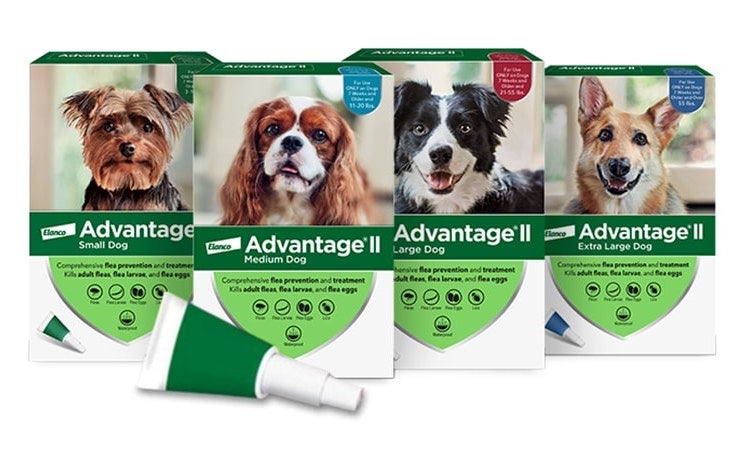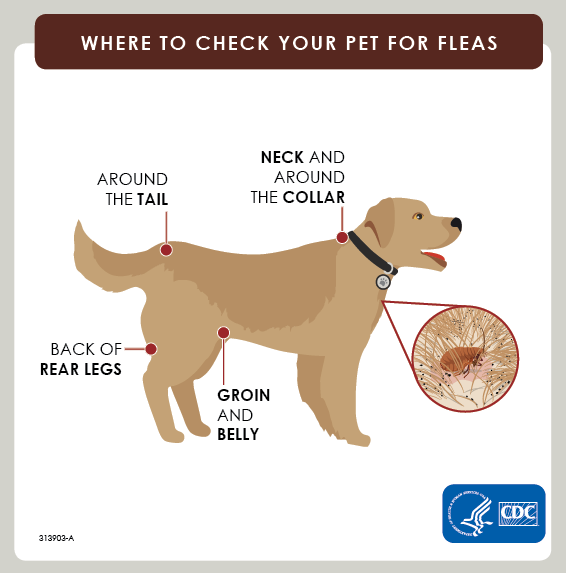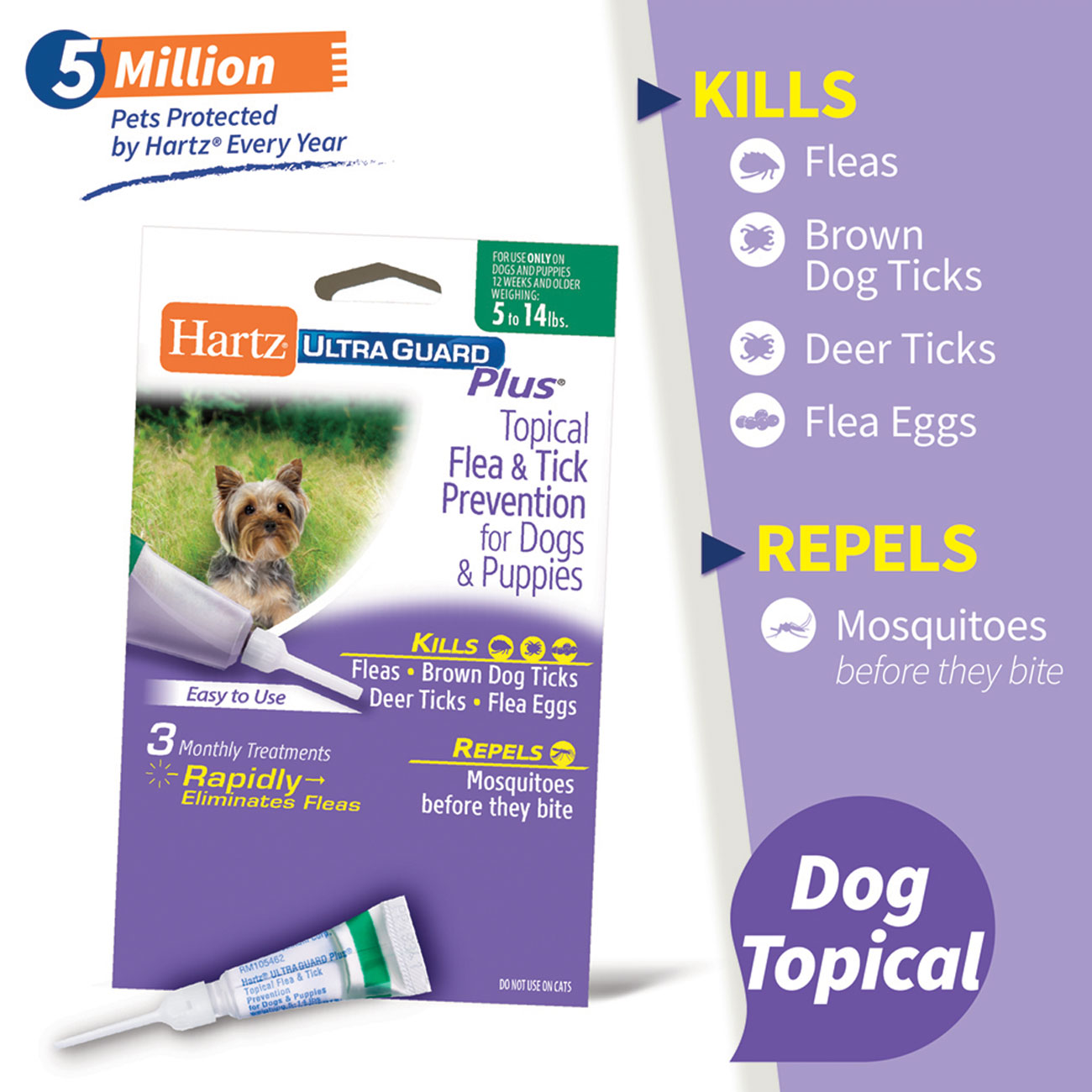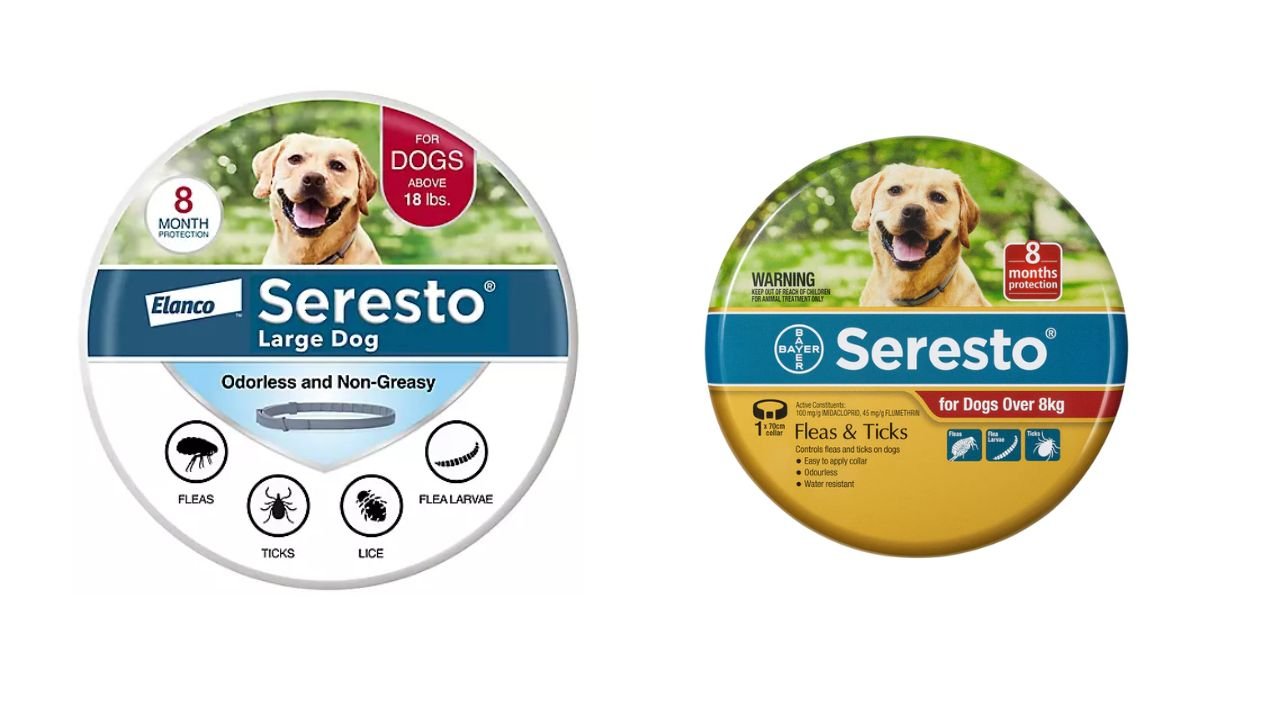Prevention of Fleas in Dogs. Use flea prevention products recommended by veterinarians to prevent fleas in dogs. Also, regularly groom and clean your dog’s living area to reduce the risk of flea infestation.
Fleas are a common nuisance for dogs and their owners, causing itching, discomfort, and potential health issues. By taking proactive steps to prevent fleas, you can ensure your dog stays healthy and happy. This blog will explore practical methods for controlling dog fleas, including flea prevention products and regular grooming practices.
By following these tips, you can create a flea-free environment for your beloved canine companion. Let’s dive into the world of flea prevention and keep those pesky parasites at bay!
Flea Prevention In Dogs: Why It Matters
Dogs are susceptible to fleas, tiny parasites that can cause discomfort and health issues. Understanding flea prevention is crucial to keep your furry friend healthy and happy.
Flea Life Cycle
The flea life cycle consists of four stages: egg, larva, pupa, and adult. Successful prevention disrupts this cycle.
Health Risks Associated With Fleas
Fleas can transmit diseases and cause skin irritation, anemia, and allergic reactions. Prevention is critical to protecting your dog from these risks.
Recognizing Flea Infestations
Fleas can be a nuisance for both dogs and their owners. These tiny parasites cause discomfort to your furry friend and can lead to more severe health issues if left untreated. Recognizing flea infestations early on is crucial to effectively eliminate them and prevent further problems. In this section, we will discuss the signs that indicate your dog may have fleas and provide you with a step-by-step guide on how to check for these pesky insects.
Signs Your Dog Has Fleas
If your dog is experiencing any of the following signs, they likely have a flea infestation:
- Excessive scratching, biting, or licking of the skin
- Red, inflamed skin or the presence of small bumps
- Hot spots or areas of hair loss
- Black specks, known as flea dirt, on your dog’s skin or in their bedding
- Visible adult fleas crawling on your dog’s fur
It is important to note that fleas are not always easy to spot, especially if your dog has a thick coat. However, paying attention to these signs will help you identify a potential flea problem early on.
Checking For Fleas: A Step-by-step Guide
Follow these steps to check if your dog has fleas:
- Prepare a white towel or sheet to catch any fleas that may fall off your dog.
- Using a flea comb, carefully comb through your dog’s fur, paying close attention to areas such as the neck, back, and tail.
- As you comb, check the comb for any adult fleas or flea dirt. Flea dirt will appear as tiny black specks.
- If you spot any fleas or flea dirt, place it on the white towel or sheet. When wet, flea dirt leaves a reddish-brown stain.
- Continue combing through your dog’s fur, making sure to cover the entire body.
- After combing, thoroughly examine the towel or sheet for any fleas or flea dirt that may have fallen off.
If you find fleas or flea dirt during the combing process, it is essential to take immediate action to treat your dog and prevent further infestation.
By recognizing the signs of flea infestations and regularly checking your dog for these pesky parasites, you can ensure the health and well-being of your beloved canine companion.
Traditional Flea Preventive Treatments
Traditional flea preventive treatments are an essential part of keeping your dog healthy and happy. By using the right products, you can effectively protect your furry friend from the discomfort and health risks associated with flea infestations. There are various traditional methods of flea prevention, each with its own set of benefits and considerations.
Topical Solutions
Topical solutions are a popular choice for flea prevention in dogs. These products are applied directly to the dog’s skin and provide long-lasting protection against fleas. They are easy to use and typically offer a quick kill of existing fleas while also preventing new infestations.
Oral Medications
Oral medications are another practical option for flea prevention. These products come in the form of chewable tablets or flavored treats that are administered orally. They work by circulating in the dog’s bloodstream, killing fleas when they bite. Oral medications are convenient and can be a good choice for dogs that are difficult to treat with topical solutions.
Flea Collars
Flea collars are a convenient and long-lasting method of flea prevention. These collars are infused with insecticides that repel fleas and ticks, providing continuous protection for your dog. They are easy to use and can be a good option for dogs that are sensitive to topical treatments or oral medications.
Natural Alternatives For Flea Control
Dogs are susceptible to flea infestations, but you can combat them using natural alternatives for flea control. These methods are effective and safe for your furry friend.
Herbal Remedies
Herbal remedies like neem oil and lavender are natural flea repellents that can help keep fleas at bay. Dilute these essential oils with water to create an herbal flea spray.
Dietary Supplements
Adding supplements like brewer’s yeast or apple cider vinegar to your dog’s diet can make their skin less appealing to fleas. These supplements can be mixed with food for easy consumption.
Environmental Strategies
Regular vacuuming and washing bedding in hot water can help eliminate flea eggs in your home. Natural flea collars infused with essential oils can also effectively repel fleas.
Maintaining A Flea-free Environment
Preventing fleas in dogs requires more than just treating the pet itself. It also involves creating and maintaining a flea-free environment in and around your home. By implementing regular cleaning routines, using insecticides safely, and landscaping to deter fleas, you can significantly reduce the risk of infestation. In this article, we will explore these methods in detail to help you keep your furry friend free from these pesky parasites.
Regular Cleaning Routines
Keeping your home clean and tidy is crucial in preventing fleas from taking hold. Regular vacuuming and mopping can help remove flea eggs, larvae, and adults from your floors and carpets. Make sure to pay attention to areas where your dog spends the most time, such as their bedding, favorite spots, and furniture they frequent. Washing your dog’s bedding frequently in hot water can also help eliminate any fleas or eggs that may be hiding there. Additionally, keeping your yard free from debris and clutter can reduce the hiding places for fleas.
Safe Use Of Insecticides
While insecticides can be effective in controlling fleas, it is crucial to use them safely to avoid any harm to your dog or family members. Always read and follow the instructions on the label carefully. Choose products specifically designed for dogs and consult your veterinarian if you have any concerns. It’s essential to apply the insecticides only in areas the manufacturer recommends, such as carpets, cracks, and crevices, while avoiding direct contact with your dog’s skin. Remember that some insecticides may require you to vacate the treated area temporarily, so plan accordingly.
Landscaping To Deter Fleas
Creating a flea-resistant landscape around your home can help prevent infestations. Start by regularly mowing your lawn and keeping the grass short, as fleas prefer tall grass and shaded areas. Remove any excess vegetation, leaves, and debris where fleas could potentially hide. Consider using plants known to repel fleas, such as lavender, rosemary, and mint, in your garden or landscaping. These natural deterrents can help keep fleas away from your outdoor space. If you live in an area with a high flea population, you may also want to consider installing a barrier, such as gravel or wood chips, around the perimeter of your yard to prevent fleas from entering.
By incorporating these practices into your routine, you can maintain a flea-free environment for your dog and your family. Remember, prevention is critical, so stay vigilant and take proactive measures to keep these unwanted pests at bay.
Grooming Techniques To Prevent Fleas
Implement effective grooming techniques to safeguard your furry friend from pesky fleas. Regular baths, flea combing, and using preventive products can help prevent flea infestations in dogs. Consistent care is critical to maintaining a flea-free environment for your beloved pet.
Grooming Techniques to Prevent Fleas
Fleas are not only irritating but also harmful to dogs. They can cause severe itching and even transmit diseases. Prevention is always better than cure, so grooming techniques can help in avoiding flea infestation in dogs. Here are some effective grooming techniques that can prevent fleas in dogs.
H3: Effective Bathing
Giving your dog a bath is essential for its hygiene, but it can also help prevent fleas. Use a flea shampoo that contains natural ingredients such as neem, eucalyptus, or lavender oils. These oils have insecticidal properties and can repel fleas. Make sure to lather the shampoo well and leave it on for a few minutes to allow it to work. Rinse thoroughly to remove all the shampoo and fleas.
H3: Combing and Brushing
Combing and brushing your dog’s fur regularly is a great way to prevent fleas. Use a flea comb that has tightly spaced teeth to remove fleas and their eggs from your dog’s coat. Start from the head and work your way down to the tail, making sure to comb in the opposite direction of hair growth. Pay extra attention to the neck, armpits, and groin areas, as fleas tend to hide in these warm and moist areas.
Brushing your dog’s fur also helps remove loose hair, dirt, and debris that can attract fleas. Depending on your dog’s coat type, use a slicker brush or a bristle brush. Regular brushing also stimulates blood circulation and distributes natural oils, keeping your dog’s coat healthy and shiny.
H3: Professional Grooming Services
Professional grooming services can also help prevent fleas. They have the expertise and tools to groom your dog’s coat effectively, removing any fleas, ticks, or other parasites. They can also give your dog a flea bath and apply flea prevention products such as topical treatments or flea collars. Regular grooming sessions can keep your dog’s coat clean, healthy, and free from fleas.
In conclusion, grooming techniques are an essential part of preventing fleas in dogs. Regular bathing, combing, and brushing can remove fleas and their eggs, while professional grooming services can provide additional protection. By following these techniques, you can keep your dog flea-free and healthy.
The Role Of Diet In Flea Prevention
When it comes to preventing fleas in dogs, the role of diet is paramount. A well-balanced diet can help strengthen a dog’s immune system and skin health, making it less susceptible to flea infestations. In this article, we’ll explore the importance of diet in flea prevention and delve into the specific foods and supplements that can aid in repelling fleas and maintaining optimal skin health for your furry friend.
Foods That Repel Fleas
Certain foods can naturally repel fleas due to their specific odors or properties. Including these foods in your dog’s diet can act as a natural deterrent against fleas. These foods include:
- Garlic: Contains compounds that can make your dog less attractive to fleas.
- Brewer’s Yeast: Rich in B vitamins, which can help in repelling fleas.
- Apple Cider Vinegar: When added to your dog’s water, apple cider vinegar can make the environment less hospitable to fleas.
Supplements For Skin Health
In addition to incorporating specific foods, certain supplements can contribute to maintaining optimal skin health, making it more challenging for fleas to take hold. These supplements include:
- Omega-3 Fatty Acids: Found in fish oil, they can help improve skin health and coat condition.
- Vitamin E Acts as an antioxidant and supports healthy skin, reducing the likelihood of flea infestations.
- Probiotics: Aids in maintaining a healthy gut, which is essential for overall immune function and skin health.

Credit: yourpetandyou.elanco.com
When To Consult A Veterinarian
Flea Infestation Outbreaks
If you notice excessive scratching or red, irritated skin on your dog, it could indicate a flea infestation. Consult your veterinarian immediately for a thorough examination and appropriate treatment plan.
Choosing The Right Preventive Treatment
Selecting the proper preventive treatment for your dog can be overwhelming. Your veterinarian can help you decide based on your dog’s lifestyle and health status.
Managing Flea Allergy Dermatitis
Flea allergy dermatitis can cause severe discomfort for your dog. Your veterinarian can provide effective treatment to manage this condition and alleviate your dog’s suffering.
Monitoring And Adapting Flea Prevention Strategies
It is crucial to monitor and adapt prevention strategies to effectively prevent fleas in dogs. Regularly inspect your pet for signs of fleas and adjust the prevention methods as needed. By staying vigilant and making necessary changes, you can ensure effective flea control for your furry friend.
Seasonal Considerations
Different seasons require different flea prevention strategies. During warmer months, flea populations increase, so it’s essential to monitor your dog’s flea prevention methods closely. Increase the frequency of flea treatments during this time, and consider using flea collars to supplement your dog’s regular flea prevention routine. During colder months, flea populations decrease, so you may not need to be as vigilant with flea prevention. However, it’s still essential to maintain a consistent flea prevention routine to avoid any future flea infestations.
Travel And Flea Exposure
If you and your dog are traveling, being mindful of flea exposure is essential. Fleas can be found in many different environments, so it’s crucial to take preventative measures, especially if you’re traveling to a new area. Before traveling, make sure your dog is up-to-date on all flea prevention treatments. Consider using a flea collar or oral medication to ensure maximum protection. Additionally, be mindful of your dog’s surroundings and avoid areas where fleas are known to thrive, such as wooded areas or areas with tall grass.
Evaluating the Effectiveness Of Prevention
It is essential to evaluate the effectiveness of your dog’s flea prevention methods regularly. If you notice an increase in fleas, it may be time to adjust your dog’s preventative measures. Consider changing flea treatments or supplementing with additional prevention methods, such as flea collars or oral medication. Additionally, be sure to treat your home and yard for fleas to prevent future infestations. Regularly monitoring and adapting your dog’s flea prevention methods can ensure a happy, healthy, and flea-free dog.

Credit: www.cdc.gov
Flea Prevention Myths Debunked
Fleas are not only a nuisance for dogs, but they can also pose serious health risks. That’s why it’s crucial to separate fact from fiction regarding flea prevention. In this section, we will debunk common misconceptions about preventing fleas in dogs and provide fact-checked flea control tips.
Common Misconceptions
There are several misconceptions surrounding flea prevention in dogs. Let’s take a closer look at some of the most common ones:
-
- Myth: Dogs only get fleas from other infested animals.
Fact: While direct contact with infected animals is one way dogs get fleas, they can also pick up fleas from infested environments, such as grassy areas or even your backyard.
-
- Myth: Fleas are only a problem during the summer months.
Fact: Fleas can be a year-round problem, as they can survive in warm indoor environments even during the colder months. Regular flea prevention is essential regardless of the season.
-
- Myth: Natural remedies are just as effective as chemical flea control products.
Fact: While natural remedies may have some repellent properties, they are generally not as effective as veterinary-recommended flea control products. It’s essential to consult your veterinarian for the most appropriate and effective flea prevention options.
Fact-checking Flea Control Tips
Now that we’ve debunked some common myths let’s fact-check some flea control tips:
- Regularly groom your dog: Regular grooming, including brushing your dog’s coat and checking for fleas or flea dirt, can help identify and address flea infestations early on.
- Use veterinarian-recommended flea control products: Your veterinarian can recommend safe and effective flea control products, such as topical treatments or oral medications, that are specifically formulated for dogs.
- Clean your dog’s bedding and surroundings: Regularly washing your dog’s bedding and vacuuming areas where your dog spends time can help remove any flea eggs or larvae, reducing the risk of infestation.
- Keep your outdoor environment tidy: Keeping your yard free from debris and regularly mowing the grass can help minimize flea habitats and reduce the chances of your dog picking up fleas.
By separating fact from fiction and following these fact-checked flea control tips, you can help protect your beloved canine companion from the discomfort and potential health risks associated with fleas.

Credit: www.hartz.com
Frequently Asked Questions
Prevention of Fleas in Dogs?
Prevention of Fleas in Dogs. Use flea prevention products recommended by veterinarians to prevent fleas in dogs. Also, regularly groom and clean your dog’s living area to reduce the risk of flea infestation.
What Can I Give My Dog To Prevent Fleas?
To prevent fleas in dogs, you can give them flea-prevention medications prescribed by a veterinarian. These medications are effective in killing and preventing fleas from infesting your dog. Regular grooming and keeping your dog’s environment clean also help prevent fleas.
What Kills Fleas Immediately On Dogs?
Using flea treatments such as spot-on products or oral medications can kill fleas on dogs instantly.
Can Dogs Still Get Fleas On Preventative?
Yes, dogs can still get fleas on preventative, but the infestation is usually less severe. Regular preventative treatment is crucial.
How To Prevent Ticks and Fleas On Dogs?
To prevent ticks and fleas on dogs, use flea and tick-preventative products recommended by your veterinarian. Please clean your dog’s environment by vacuuming regularly and washing their bedding. Regularly groom your dog and inspect for ticks and fleas. Avoid walking your dog in areas with high tick and flea populations.
Conclusion
Preventing fleas in dogs is essential for their health and well-being. Regular grooming and hygiene, along with using flea preventatives, can help keep your furry friend free from these pesky parasites. It’s essential to consult with your veterinarian to determine the best preventative options for your dog.
By taking these steps, you can ensure your dog stays happy, healthy, and flea-free.

Hello I am Farhana I have been doing research on dogs since last 10 years. I have been doing research on dog special parts or dog food since last 10 years. I have gained knowledge about my dog in these ten years so. I want to blog about it daily.

